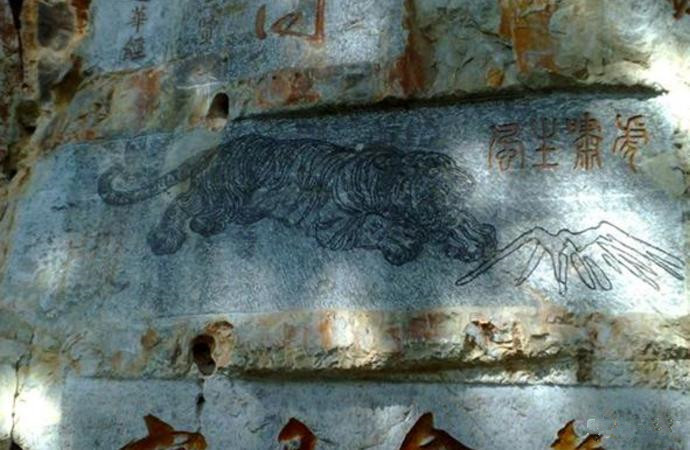
Wenquan Cliff Inscriptions in Anning City, Kunming
Overview
Wenquan Cliff Inscriptions, located in Anning City (安宁市), Yunnan Province (云南省), are a significant group of stone carvings from the Ming Dynasty (明朝) to the Republic of China (民国时期). These inscriptions are situated on Yiqing Road (一清路) in the Wenquan community (温泉社区) of Wenquan Street (温泉街道). They were designated as a key national cultural relic protection unit by the State Council of the People’s Republic of China in October 2019.
Historical Background
The Wenquan area is situated along the Tanglang River (螳螂川), about 7 kilometers north of Anning City. It lies between Longshan (龙山) and Fengshan (凤山) mountains, known for its natural hot springs. The hot spring’s historical significance dates back to the Eastern Han Dynasty (东汉), specifically to the year 56 AD when it was discovered by the famous general Su Wenda (苏文达). Historical texts, such as the “Yuan Hunyi Fang Yulansheng” (元混一方舆览胜), have documented that Anning had the most hot springs among various districts in Yunnan.
From the Han Dynasty (汉代) to the Ming and Qing Dynasties (明清), visitors to the Wenquan area left behind a wealth of historical and cultural information on the surrounding cliffs. Over the years, the landscape has changed, and the cliff inscriptions have risen closer to the ground due to road construction during the Republic of China period.
Description of the Inscriptions
The Wenquan Cliff Inscriptions comprise more than 170 pieces of text and pictorial engravings spanning over 320 years, mainly from the Ming and Qing Dynasties to the Republic of China. These inscriptions are located on a 600-meter-long, 20-meter-high cliff wall. The area is divided into three sections: the first two are separated by the Kunming Cadres Sanatorium, and the third is within the Long family villa (龙氏别墅).
The inscriptions include six from the Ming Dynasty and over 160 from the Qing and Republican periods. The earliest inscription is the phrase “Ting Quan” (听泉), written by He Mengchun (何孟春), a Vice Minister of the Right who governed Yunnan in 1521 during the Ming Zhengde period. Another notable inscription is “Bu Ke Bu Yin” (不可不饮) by Yang Shen (杨慎), a famous scholar.
Artistic Features
The Wenquan Cliff Inscriptions are notable for their diversity in content, which includes scenic names, couplets, poetry, and Buddhist phrases. The majority are calligraphic works, with a few exceptions being pictorial carvings such as the “Water Moon Guanyin” (水月观音图) and “Tiger Howling Wind” (虎啸生风图). The longest inscription, “Nine Curves Dragon Nest” (九曲龙窝), measures 4 meters long, while the shortest, “Bu Ke Bu Yin” (不可不饮), is merely 27 centimeters.
Cultural Significance
The Wenquan Cliff Inscriptions are among the best-preserved and most abundant cliff carvings in Yunnan. They reflect the region’s natural beauty and cultural richness, intertwined with the prevailing social customs, economic conditions, aesthetic standards, and the policies of different ruling powers over the centuries. Some inscriptions are linked to significant historical events, providing valuable documentation for studying Yunnan’s political, economic, and cultural history.
Honors and Recognition
On July 14, 2023, the “Bu Ke Bu Yin” (不可不饮) and “Shizong” (石淙) inscriptions were included in the first batch of ancient famous stone inscriptions published by the National Cultural Heritage Administration.
Preservation Measures
In October 2019, the Wenquan Cliff Inscriptions were officially recognized as a key national cultural relic protection unit by the State Council of the People’s Republic of China.
Travel Information
Location
The Wenquan Cliff Inscriptions are located in Anning City (安宁市), Yunnan Province (云南省), specifically on Yiqing Road (一清路) in the Wenquan community (温泉社区).
Transportation
Driving: The Wenquan Cliff Inscriptions are approximately 8.9 kilometers from the center of Anning City (安宁市), with a driving time of about 16 minutes.

 7 Days GolfingTour
7 Days GolfingTour
 8 Days Group Tour
8 Days Group Tour
 8 Days Yunnan Tour
8 Days Yunnan Tour
 7 Days Shangri La Hiking
7 Days Shangri La Hiking
 11 Days Yunnan Tour
11 Days Yunnan Tour
 6 Days Yuanyang Terraces
6 Days Yuanyang Terraces
 11 Days Yunnan Tour
11 Days Yunnan Tour
 8 Days South Yunnan
8 Days South Yunnan
 7 Days Tea Tour
7 Days Tea Tour
 8 Days Muslim Tour
8 Days Muslim Tour
 12 Days Self-Driving
12 Days Self-Driving
 4 Days Haba Climbing
4 Days Haba Climbing
 Tiger Leaping Gorge
Tiger Leaping Gorge
 Stone Forest
Stone Forest
 Yunnan-Tibet
Yunnan-Tibet
 Hani Rice Terraces
Hani Rice Terraces
 Kunming
Kunming
 Lijiang
Lijiang
 Shangri-la
Shangri-la
 Dali
Dali
 XishuangBanna
XishuangBanna
 Honghe
Honghe
 Kunming
Kunming
 Lijiang
Lijiang
 Shangri-la
Shangri-la
 Yuanyang Rice Terraces
Yuanyang Rice Terraces
 Nujiang
Nujiang
 XishuangBanna
XishuangBanna
 Spring City Golf
Spring City Golf
 Snow Mountain Golf
Snow Mountain Golf
 Stone Mountain Golf
Stone Mountain Golf


















